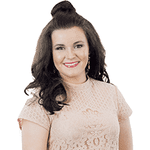Hiring a Business Photographer: What to Look For and How to Plan a Branded Shoot
by Cydney Hatch • December 21, 2018
After being in the photography world for over 10 years, I have come to know this plain and simple truth:
Finding the right photographer is a lot like finding the right hairstylist. You not only get what you pay for, but there is also an array of cheap, expensive, terrible and awesome ones…it will require you to find the “right fit.”
Trust me when I say this, just because someone owns a camera doesn’t mean they know how to use it!

In a world where any Joe Schmo can pick up a camera and call themselves a photographer, that leaves you, the business owner, at risk for expensive mistakes if you hire the wrong person for the job.
To help you avoid wasting time and money on the wrong photographer(s), I will give you my expert advice on how you can hire the best photographer and how you can collectively work together on branded photo shoots.
By knowing what to look for and what to expect, you will not only receive great photography content but you will develop a meaningful relationship with a creative who will benefit your business for years to come!
Finding The Right Photographer: Things To Consider
As a business, there will be many times you will need to hire a photographer for your visual branding needs—whether it be your social media content, website design or other marketing materials. Unfortunately, in the photography world, unlike other industries, there are no legal regulations or licenses required for photographers to practice.
The ugly thing about that?
There is no guarantee of the quality of work they will produce, let alone a standard for pricing! So, as a business owner, what do you need to know to hire the best photographer for your business needs? The truth is, you need to do some homework yourself! Below, take a look at things you need to know so you have your ducks in a row when talking to potential photographers:
Create Crystal Clear Branding Standards
First and foremost, before you can expect someone else to portray your brand, you first need to create a crystal clear understanding yourself. Sometimes I think photographers are viewed as creative wizards who can telepathically understand clients needs and wave wands to produce perfect results.
That is not the case!
They need direction from you to capture things correctly and when you make the effort, they are grateful and the process runs a lot smoother! In order to portray your business appropriately, you will need to have a clear outline of the following things:
- Your Brand (color palettes, styling, typography, locational significances, voice, etc)
- Buyers Personas and their preferences and likes
- The experience you want your Target Audience to have when engaging with you
- What you want your Target Audience to take away from your Branding visuals
- How you want to incorporate business competition elements and how you are different
When you can outline these for your photographer, you can easily see if there is a creative synergy between the two of you. A big red flag to note when hiring a business photographer is if they do not ask questions along these lines as this is the key to making any business photography shoot successful!
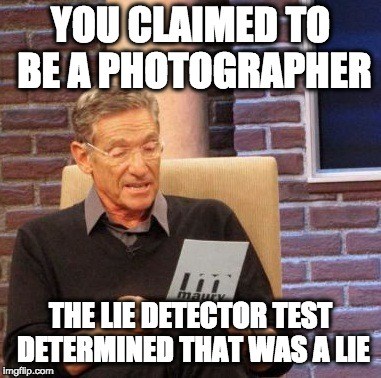
The best business photographer will know the ins and outs of your business’s brand, obviously with your help and insights!
BONUS TIP: Create Visual and Written Brand Outlines
When talking to your photographers about your brand, I find it is helpful to have both written/verbal expectations as well as visual examples of the branding standards you have.
Why? Well, your idea of “rustic” might be different than your photographer’s vision of rustic so to have visual clarity on things that might be trivial will be helpful. This can simply be a quick collection of images or a Pinterest board of visuals they can visually understand.
Define Your Project and Photography Needs
As a client, you need to bring clear expectations of your photography needs. Do you need banner images for a website? Do you want headshots? Do you want product photos or office space photos?
As a business owner, every time you hire a photographer it is best to create a general photo list of the photos you are needing. Come up with a description that’s short but detailed, to describe your project. Include a bullet list of all the important aspects of the project. For example, you might want to create a list like this if you are launching a new product line for a cooking utensil business:
- Products are stainless steel and can be reflective
- Close up micro shots
- Studio white background shots
- Branded product photography shots
- Wide angle, off-center images for the banner on the website homepage
- Products shot in lifestyle branded photos
- Three models (three women-diverse)
- Models using products in stylized space
- Model detail shots (in hand and other poses)
- Wide angle, off-center images for the banner on the website homepage
- Comparing photos of competitors
- Must be in a clean, modern kitchen
- Must use a branded color palette
- Some photos must be shot horizontally so we can use for banner displays on the website
- Lifestyle photos to be used for Instagram and Facebook accounts
A list like this can really help you narrow down the types of photos you will need and will allow the photographer to have a better idea of your photo expectations and needs. The more detailed, the better. That way, there are no discrepancies!
To discuss how to plan a branded photo shoot in detail, see the below section!
Understand Photography Pricing
Most people only have experience with “retail” photography like wedding, family and portrait photography. In these cases, a photographer takes the photo and provides you a copy of the images in digital and print form. Most times, a photography session is a certain price that is listed on a website as they know what to expect and/or the shoot is “typical.”
Business photography is a different beast as every photo shoot has different expectations and needs. Some will be a lot like retail if you are hiring a photographer for office space photos or employee portraits as there is a set expectation. But, a lot of the time, pricing will be a bit different for business photography.
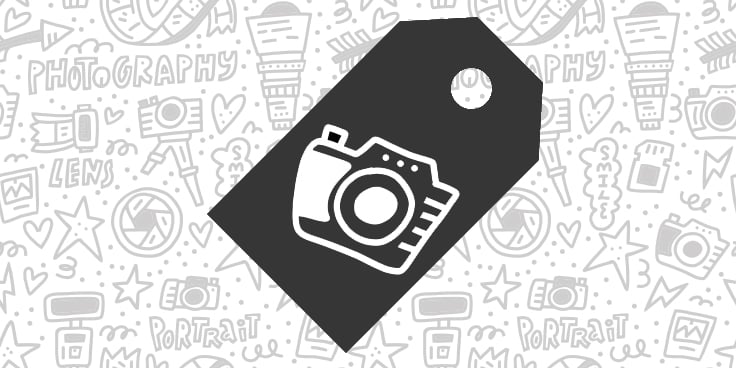
The average cost of commercial photography typically sits between $350 – $500 nationwide a session or $1,000 for a half day (4.5 hours) $1,500 for a full day (8 hours) plus an hourly rate of$200 for each hour over a full day.
Now, before your jaw drops to the floor, know there are a lot of factors involved in what the pricing will be:
- Photographer consulting time/planning
- Photographer time
- Photographer travel
- Photographer editing
- Photographer services (hair, makeup, model calls)
- Wardrobe planning
- Location renting or studio work
- Photographer printing and copyright rights
Since there are so many factors involved in branded business photography, many photographers don’t offer a standard pricing menu. Instead, they consult with potential clients and then provide a quote based on the requirements, time and labor necessary. As a business owner, it’s good to understand the many factors in which a photographer will consider their pricing.
For example, I have worked with many apparel companies and shooting/designing their branded shoots for social media content, websites and catalogs.
Looking at each shoot and how vastly different they are, you can see the extensive planning behind them and why I might have charged more.
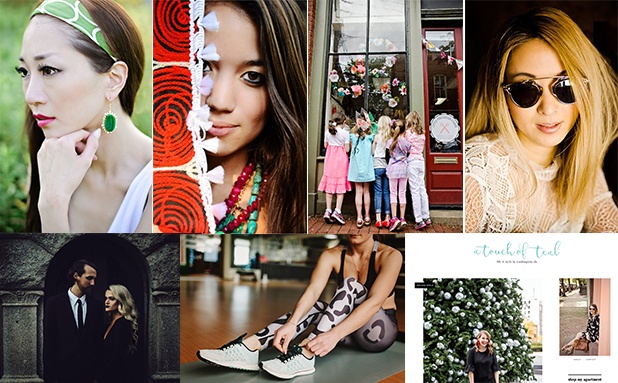
Do not assume photographers just show up, shoot and send you photos. There is a lot of planning and time that goes into successful business photography sessions! Whether it’s for a holiday promotion, content fills or website images photographers take a lot of time to produce the best results, and they should be paid for it.
BONUS: How to Save Money on Commercial Photography
If you are looking at the above numbers and thinking it’s out of your range, breathe! As business photography shoots can add up fast, there are ways in which you can cut down costs. Here are some helpful hints:
- Save time by prepping: Making shot lists, telling models what to expect and get things organized will save you time in the photoshoot. Prepping matters as you can cuts down shooting time, especially when studios charge by the hour.
- Communicate expectations pre-shoot: The day before the photo shoot, communicate with your photographer to make sure you are on the same page. By doing this, you avoid having to purchase reshoots due to miscommunication.
- Offer your own services: Sometimes photographers will charge you more if they have to find their own models, hair stylists and makeup artists. If you are interested in any of those services it might be easy to hire your own people to cut down production costs. Look for models or people you know who could work as models. Know a friend who can do hair and makeup? Offer trades for your products and services for them to help you out for the shoot!
- Shoot locally: To avoid additional travel fees or getting charged for locations, find locations yourself. Scouting out locations that can work ahead of time can really help the costs of your photo shoot, it just requires some time, but if it’s free, why not?!
Understand Photography Rights and Copyright
One of the most confusing aspects of hiring a photographer can be figuring out photo ownership.
To be clear, unless you have a written and signed work-for-hire agreement, the photographer will retain the ownership of the images they photograph. The Federal Copyright Act of 1976 clearly states that the ownership of an image is retained by the person who created it. Therefore, you do not own the images. You are in fact licensing the images for use.
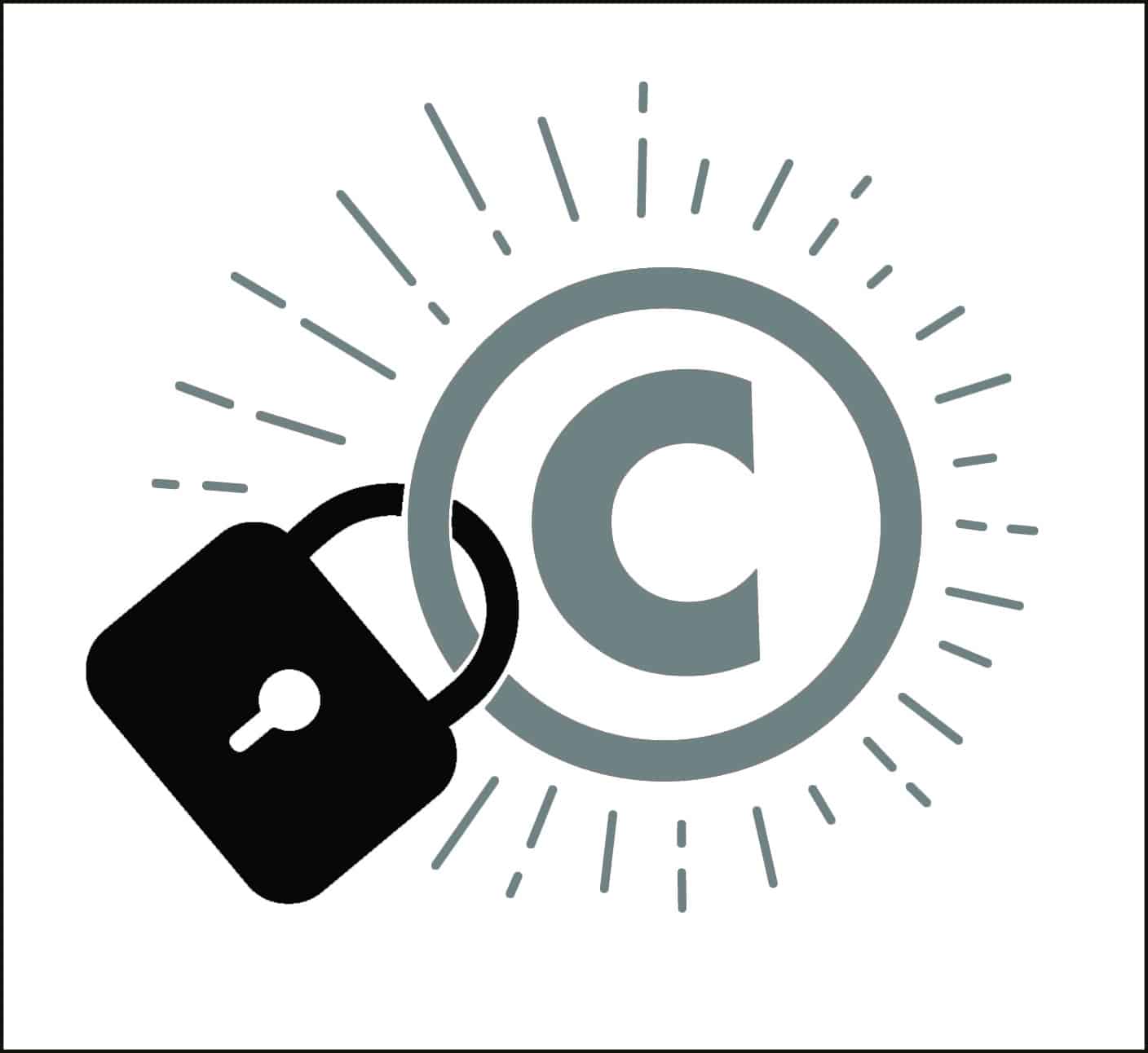
Remember that a photographer’s job isn’t just simply pushing buttons. They’re are creating a balance of lighting, posing and post-processing to make your vision a reality. Creation begets ownership!
Another thing to consider is digital right fees and if your photographer requires extra payment for those based on how you are using the images. If they are photos for your website of employee headshots, you might not have licensing fees, but if you are hiring a photographer for campaign photography that you will use to “sell products” you might see some additional fees!
While this can be a little confusing for some, remember that if you’re hiring a photographer to shoot images that are “selling” your product for you, they create an added benefit to you and therefore photographers might want a cut of the cake!
Knowing this information ahead of time will be helpful in usage and ownership conversations with potential photographers. Be sure to get these agreements in a written and signed agreement so there are no “shockers” post photo shoot.
Finding the Right Photographer: Things To Look For
Now that you have done your homework on what you should know and bring to the table before meeting with photographers, the next step is finding what makes a good photographer. In this section, I will share things you should look for in hiring a professional, instead of falling prey to photographers that will waste time and money.
Let’s start with some red flag comparisons:
Amateur vs. Professional
- Amateurs are usually much cheaper. As stated above, you get what you pay for
- Amateurs lack the experience to adapt quickly to changing photographic situations
- Amateurs lack backup equipment as they are “just starting out” and do not know what they need
- Amateurs typically still watermark their images (which is so 2000)
- Amateurs lack publication features and highlighted clients in their portfolios
- Professionals are sometimes more set in their ways as they are experienced and know the drill
- Professionals have meaningful conversations to understand the client
- Professionals ask a lot of questions
- Professionals have a set turn around time and photography procedures in place
To talk more about things you should look for let’s dive into some specifics:
Inquire Photographer Knowledge
This is easy to overlook because as a client you might not know a lot about photography, hence you are hiring someone, but do not assume they know what they are doing because they are a “photographer.”
Be an active consumer and ask questions to see their comfort, expertise and confidence in answering the following questions:
- How do they manage lighting situations indoor versus outdoor? What about low-light situations?
- What mode do they shoot in and what quality of images do they shoot? (Hopefully, they shoot in Manual mode and RAW quality)
- How do they manage posing and coming up with styling for their shoots?
- How many shoots have they done? Have they worked with other businesses, if so, who?
- How do they meet clients typically? Do they have reoccurring clients?
- How do they edit photos? Do they have a certain stylized editing filter/style?
A key tip: Listen to their answers, is it educational for you? If so, they probably know their stuff, which is a good sign!
Many photographers these days know the basics and cover up their lack of skill with Photoshop actions. Make sure you hire someone who really understands the process of photography.
See How Resourceful and Business Smart They Are
The best business photography takes time. A quality photographer is willing to dedicate the time needed to ensure the best results for your business. This includes asking the right questions about your business, branding, the use of the photos and the results you are hoping to get from them.
Beyond understanding your business inside and out, they must devote time to the technical sides of the project. They should show a willingness to invest the time and resources in setting up a detail-oriented shoot.
Your target audience will be able to pick up on low-quality photoshoots. They might not be able to pinpoint why they feel that way, but they can feel turned off if things come off as rushed!
Avoid their disappointment by finding someone committed to your brand as much as you are!
Stalk Your Photographers and Do Some Digging
Start your search by looking at their social media presence, reading reviews and local listings.
Is feedback from clients positive? How does the photographer respond? How do they interact with their Instagram followers, do they seem responsive and personable?
Carefully review potential photographers’ websites and blogs to check out photos of other projects they’ve shot, which will give you an idea of their style. The design of the website may also have clues about the photographer’s personality and sensibility. Is their content up to date or looking like it was poorly made on Blogger in the 2000’s?


Does their style match your branding standards and what you are looking for? If not, they might not be the best fit for your needs, so move on to find others who portray photography styling you want!
Portfolio Check, Dig Deep
On top of seeing how your photographers portray themselves online, you want to dig deeper into their work as that is what you are paying them for!
Be sure to look past the first few photoshoots they list on their website and social platforms. Do not be afraid to really dig deep and get a sense of how they do things!
Understandably, photographers put their best work out first to hook people in. But, if you look a little harder and see that the quality and consistency of photos are bad, or the best shots only come from a few clients, you may want to find a photographer with more experience.
Hiring someone with a diverse, high quality and consistent portfolio will be most likely a better choice over someone who lacks those characteristics.
How are Their Consultations?
The best business photographers are a lot like freelance art directors. There is a major difference between a true artist and someone who is just a photographer.
Avoid the “just photographer” types.
An art directed photographer is one that specializes in understanding brands and everything surrounding advertising including generating new ideas, creating designs and branded messages, managing projects, etc.
If you hire someone who is not a true artist, it can put a lot of stress on you to come up with creative ways to portray your brand, the thing you are looking to avoid by hiring a photographer.
You do not want someone who shows up and wants to be instructed. By having someone who can think of creative ways to express and portray your brand beyond your wildest dreams is the photographer you will want to hire. They are the ones that truly take your brand to heart and immerse themselves in the art of advertising your brand in the best of ways!
Make Sure Your Personalities Mesh
Don’t underestimate the importance of liking and bonding with your photographer!

Just like any business partnership, being able to connect, jive and understand each other towards a shared goal will be key to your success. If the photoshoots go well, your photographer might be an ongoing creative relationship to keep for years, so if your personalities do not mesh well you might not have long-term benefits.
Do They Offer Makeup, Hair and Wardrobe Consultation?
Most photographers will have a makeup artist, hairstylist and or wardrobe stylist they recommend. If they do not have recommendations, they most likely have not been in the industry for a while which is a red flag.
Good photographers are well connected within the creative community and will be resourceful to you if you need their recommendations.
Get the Post-Production Details
What is their post-production process like?
Do they have a solid process and turn around time? Do they talk to you about editing filters and what type of stylization they will style the photos with?
Here’s a list of photo questions you will want to ask so you understand what to expect post shoot:
- How many photos will you get edited? Do you have the rights to the RAW files?
- What resolution will the photos be returned in?
- What are the photo rights?
- How long will it take to edit and receive the photos back?
- Will the images be high resolution?
- How much do they retouch images? (which can range from simple white balancing to beauty retouching and stylized art effects)
If they do not have a solid process to editing photos and can communicate what to expect, you might want to consider another photographer.
Do They Back Up Photos?
There’s no excuse for this one and a professional always backs up photos in 2 places, one offsite.
As the client, you never want to hear a photographer doesn’t have equipment back up, let alone a process for protecting your photos post-production.
Too often I hear horror stories from people who have put together productions and their photographer’s equipment failed and they didn’t have a backup. I have also heard horror stories of people who lost their photos post-production because their photographer didn’t back up photos in other locations.
Don’t be another horror story!
Know that your photos can easily vanish due to water damage, a burnt out hard drive or other technical problems, so be sure your photographer has a game plan for protecting your images.
If they do not have a process to protect your images, you might want to move on to someone else.
Do They Have an Eye For Detail?
Many times this is a huge factor in weeding out the pros from the “joes.”
A good photographer must have a very keen eye for detail to ensure that all elements within the photo—the lighting, the composition, the subject, hair/makeup and everything else in between—work together harmoniously to convey the right vision or message for a brand,
Too often, I see photographers who let background clutter, flyaway hairs, and other details go during a photo shoot and this can really take away quality. Be sure to ask them if they will look for cars, signs, flyaway hairs and other details during a shoot, especially if they are outside.
Your photographer should be aware and be your “eyes” for what works best. If you have to point out problems during a shoot, they might not be the best fit.
Schedule a Test Run
If you are a bit wary of photographers, you can never go wrong with having them do a smaller scale shoot to test drive their skillset!
This is a great opportunity to get to know your photographer and begin to feel comfortable having them take control of your visual branding experience! If they do not do a great job, you know not to hire them for the bigger projects!
You Found The Photographer: How to Plan a Shoot Together!
Wherever you are in business, at some point, inevitably, you’ll want to produce a photoshoot to showcase products, services or announcement.
This might seem like a daunting task, but it really doesn’t need to be that complicated at all!
Successful, high quality, branded photography is a huge part of running a successful business these days, so to make your job easy, I want to share the steps you need to take with your photographer in planning detailed shoots for your business or brand.
Come Up With Your Project
The first step of every shoot should be to come up with a concept.
You need to have a clear vision of your desired outcome and know your goals for the shoot. Not only will this give you the framework you need to plan a successful brand photo shoot, it will also help you to communicate your vision and goals with your collaborators, including your photographer.
So, to help you work through that process ask yourself the following questions:
How and Where are Your Photos Being Used?
Identifying where your brand photos will show up will help you plan out the shots you need, provide you with a range of content that is cohesive within your brand style and ensures that you end up with content that fits the needs of your project.
For example, there is nothing worse than realizing your photographer shot a lot of verticals when you needed photos for banners!
It’s important to ask yourself what the intention of this photoshoot is so you can make sure your photos achieve that desired result. Are these photos going to be used for storytelling social media posts? Are they going to be used in banner images on your website? Are they going to be used for campaign images?
By thinking out the purpose of your images and how you will be using them will dictate what type of shots you need to produce (ie. horizontal, vertical, or square crop? Detail or wide shot? Colored backdrops or white?), what size they’ll need to be and guarantee that your photoshoot produces the right photos for your needs.
What Design Elements Do I Need to Include?
To help create a visual concept, it’s helpful to create a “mood board” or inspiration page.
This is where you can have fun on Pinterest creating “secret boards” or creating a Google Drive folder of images! Creating an inspiration board that captures the aesthetic side of what we’re trying to achieve will also serve as a stimulus for starting to brainstorm specific shot ideas.
Things included in the inspirational project should be:
- Wardrobe styling
- Color scheme
- Locations
- Styling
- Mood experience
- Lighting
- Brand implementation
- Themes
- Products/services to be used
For example, I created this below mood board on Pinterest to inspire a valentines day shoot with Wisconsin Influencer Tiffany Tomiko.
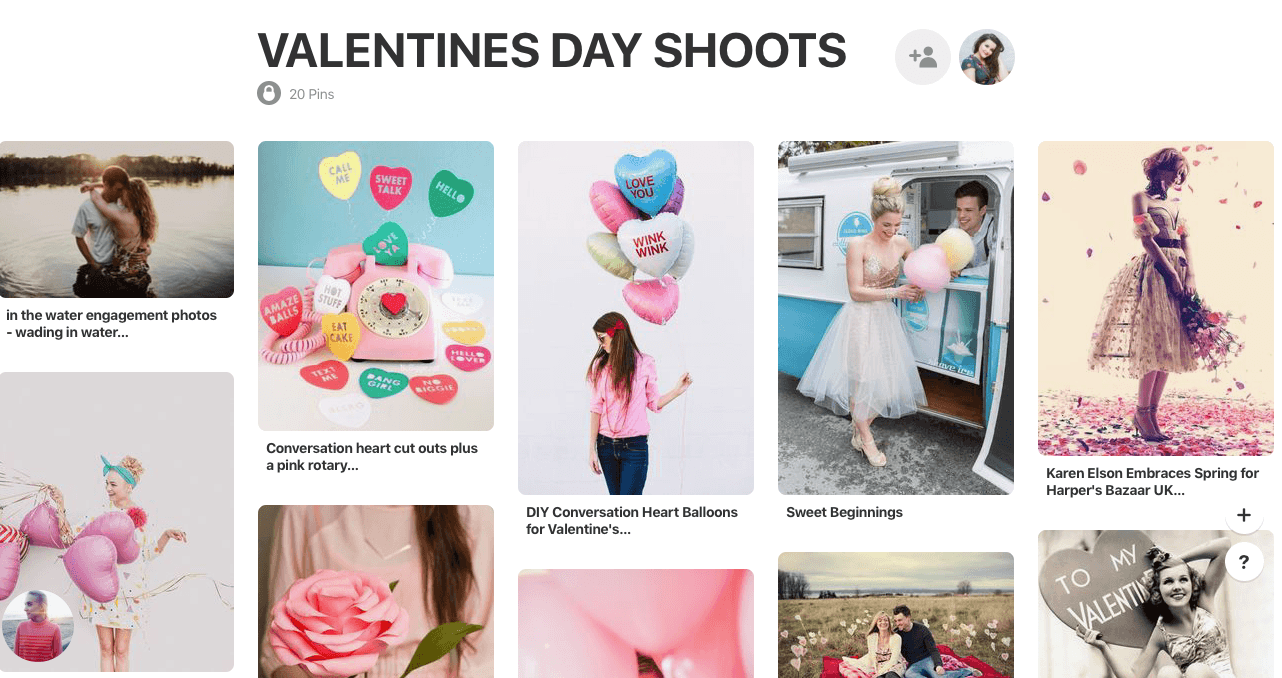
The end result was this urban valentines day inspired shoot including valentines day balloons, details and even a braided heart hairstyle!:
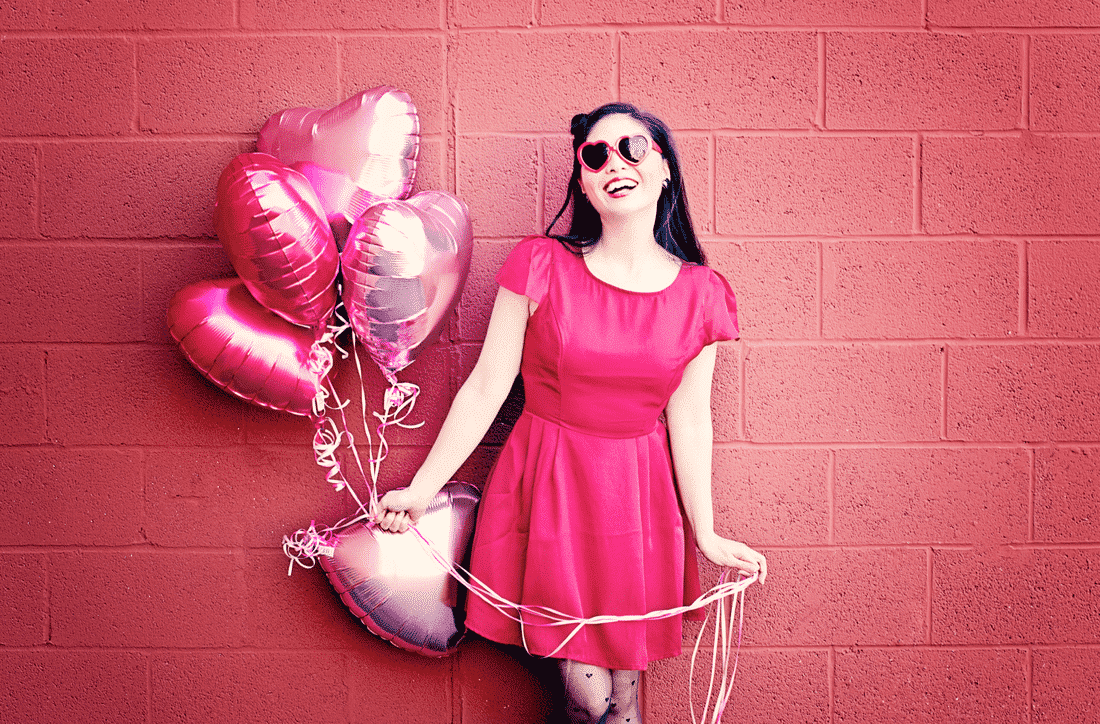
Generally, your inspiration board should be made up of a variety of content that can be used as a visual reference as to what you’re trying to achieve with your brand photo shoot and to define the creative direction of the project.
To help you further, PetaPixel created a fantastic video above that can help inspire some of the steps you need to take to conceptualize a photoshoot that can brand your business and give people the “feel” or “connections” you want!
BONUS TIP: Be Fearless! I know it’s cliche to say “think outside the box,” but in many cases the more “out there” the concept is, the better! People love fresh and new content ideas so really dig into your brand and products and see how you can visualize it in a fun way!
(This is coming from someone who has photographed photoshoots based off of: Great Gatsby, Skateboarding, Maleficent, to even romantic France!)
Create Details That Matter to Your Target Audience
Do industry research to see what types of photos have typically become popular, well-engaged with and successful. Try to break down the elements of why it’s successful and replicate it in your own branded way.
For example, if you are a business selling beanie hats, you can look up hashtags #beanie #beaniehats on Instagram and other platforms as well as searching in Google for Beanie Hats and see what images pop up. For the top search results, analyze the pages images and see what they did. For social media, look for common trends that made beanie images popular.
This was the results for #beanie on Instagram:

This was the results for #beanie on Facebook:
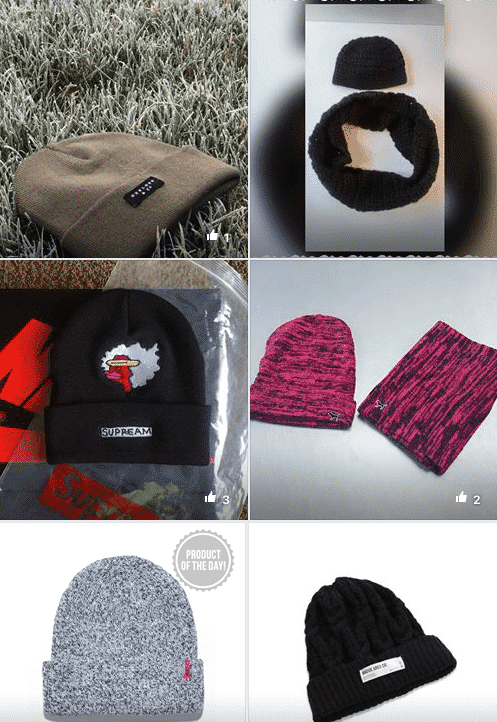
From social media results for “top photos” of #beanies you can see the general common trends that matter to target audiences:
- Lifestyle photography
- Clean and minimal studio product photography
- Detail macro shots of weave details
- Stylization
- Influencer recognition
If you look at Google results and top websites selling beanies you will see things like below:
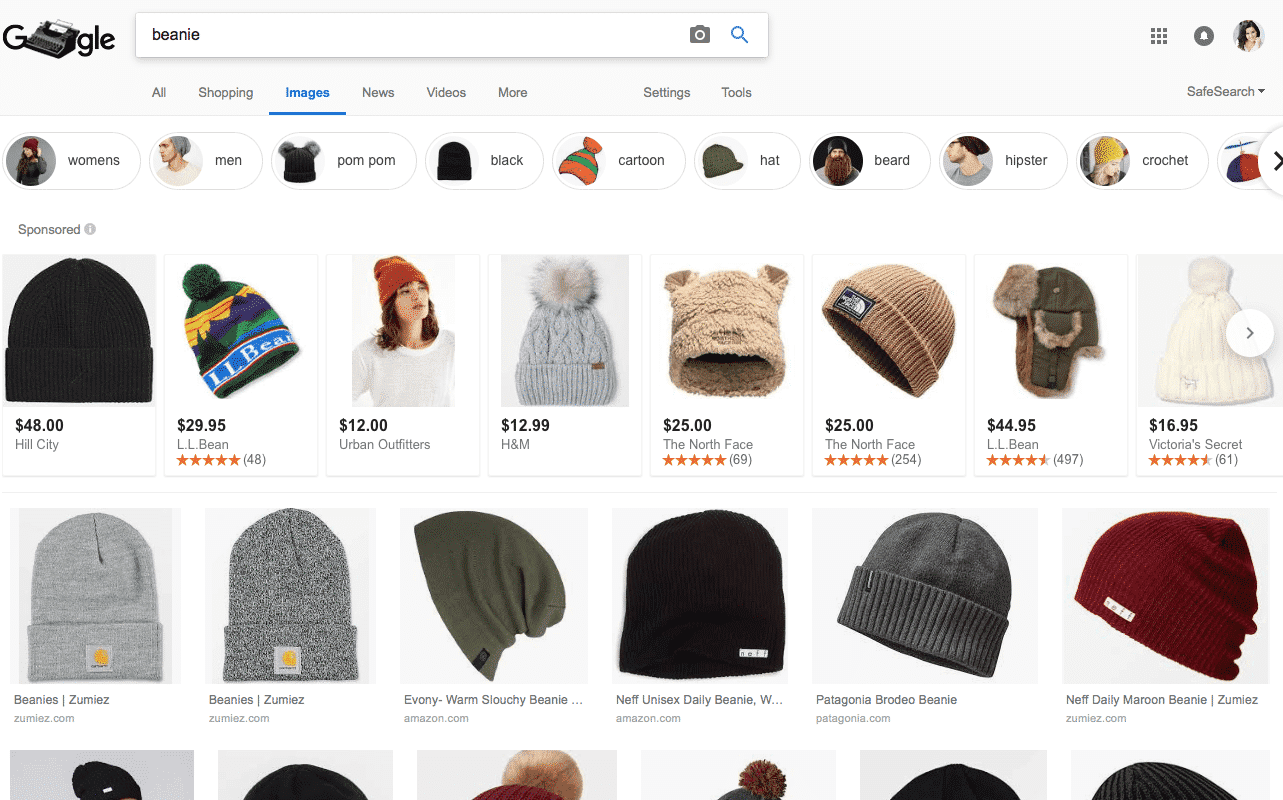
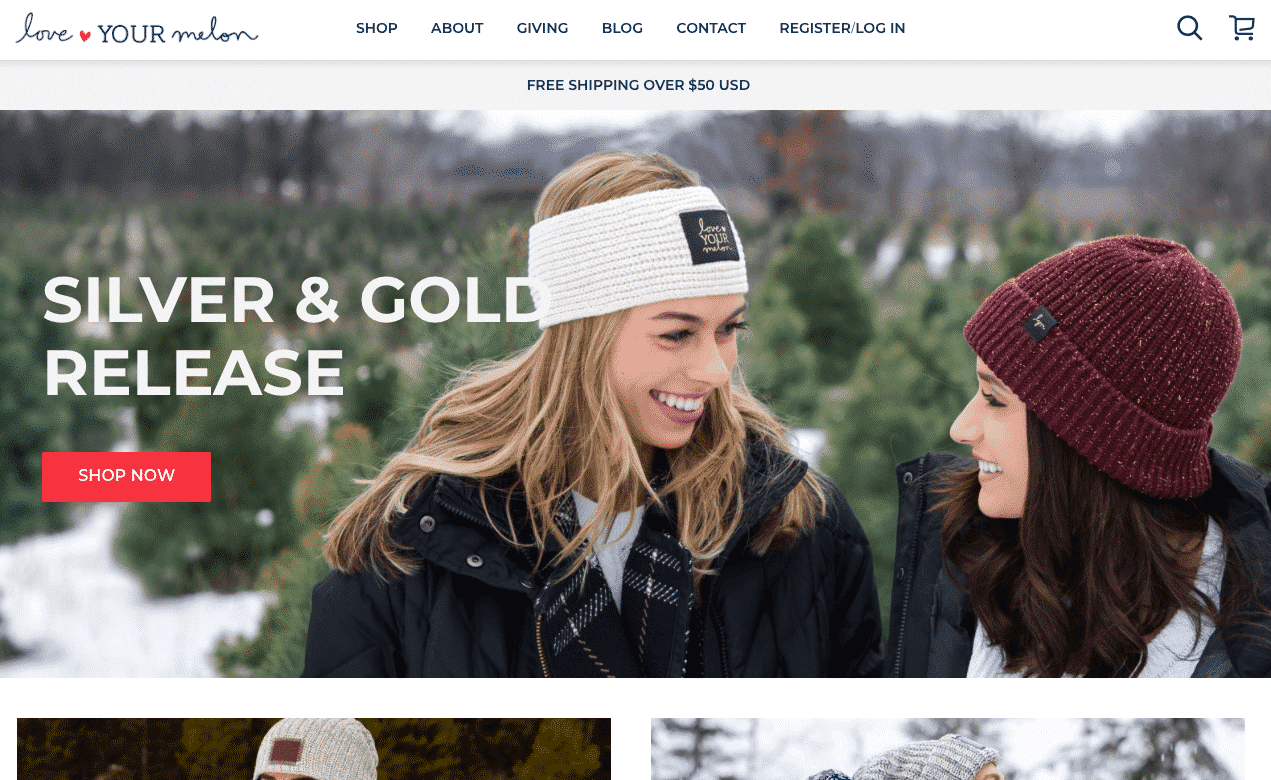
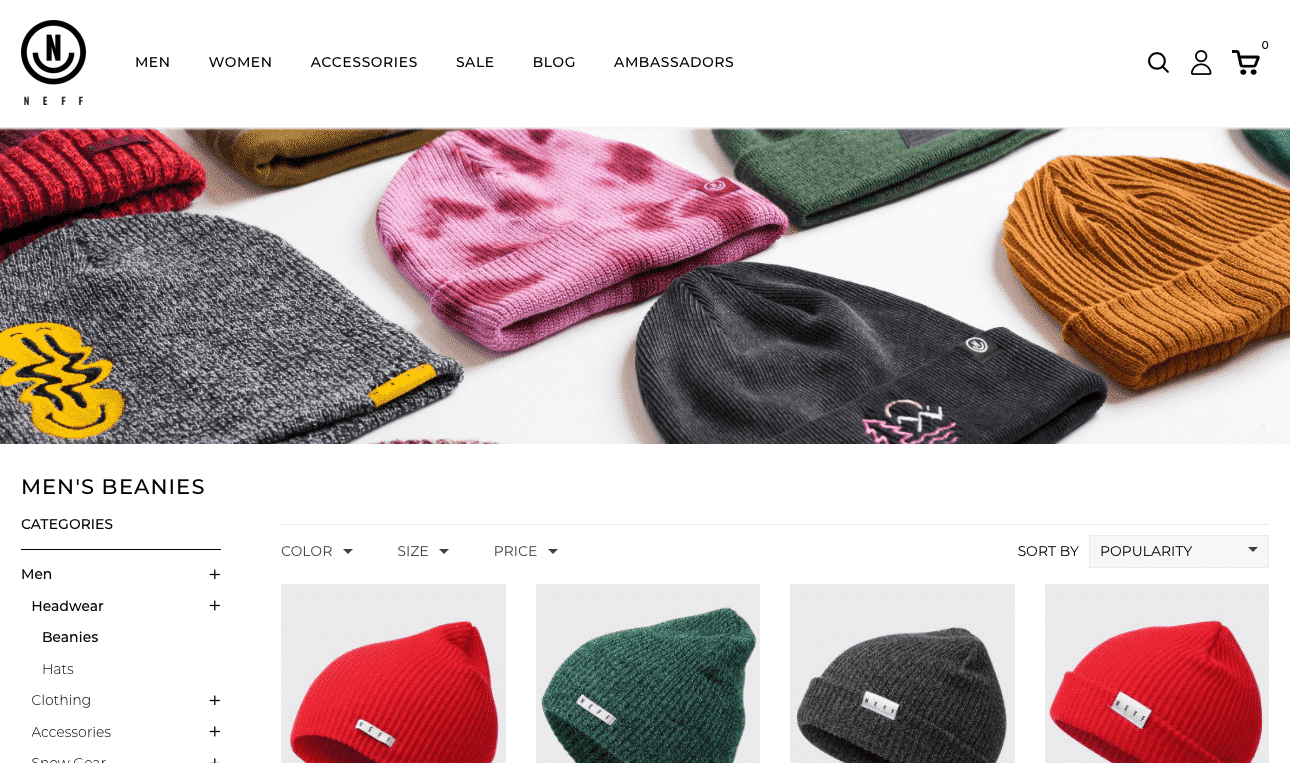
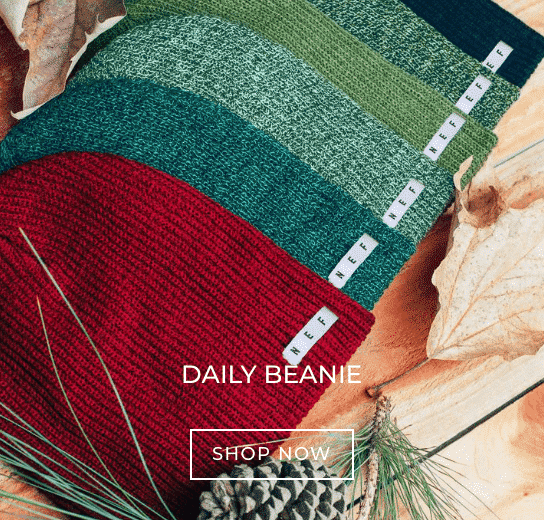
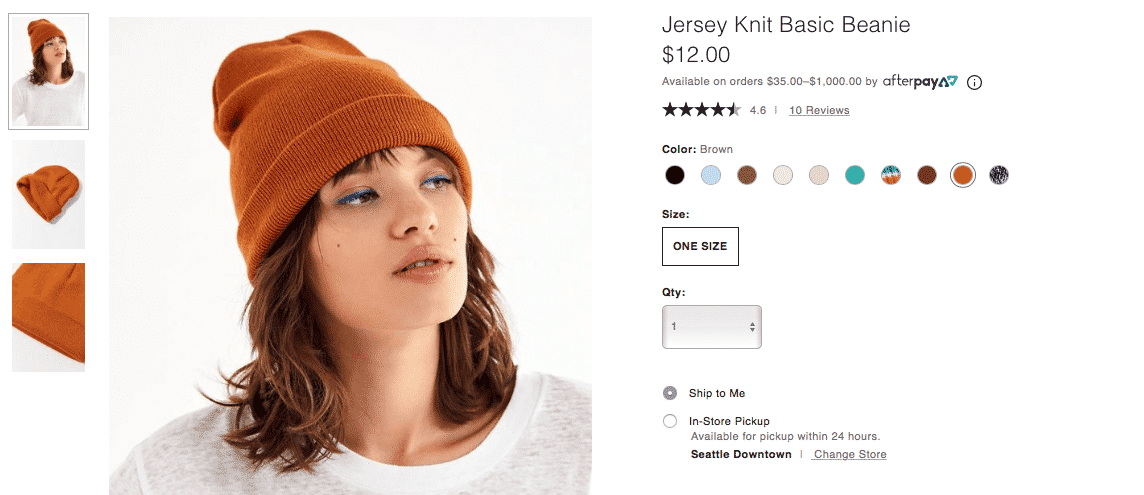
From search results of beanies you can see the general common trends that matter to your target audience:
- Lifestyle photography
- Photography showing product use like snowboarding, tubing, hot chocolate, bonfires etc
- Clean and minimal product photography (with model variations)
- Detail macro shots of weave details
- Stylization
Like these examples, you can do some research as to what kind of photographs are popular and what people like to see. With that information, you can plan photo poses and content that will be relevant to your industry!
As anything in marketing, it’s important to always shoot with your target audience in mind!
Assemble Your Needs and Team
An obvious step, but an important one is to see what you need to accomplish the photos you have set out in both purpose and aesthetic. Will your photos require a hairstylist, makeup artist, an artist to create backdrops, influencers, etc?
When thinking about who to hire, along with costs, you will want to find people who work in your similar markets. For example, if you are looking for influencers to sell your beanies in the example above, you will want to look at relevant:
- Snowboarding influencers
- Fashion influencers
- Skiing influencers
- Extreme sports influencers
- Cold weather country influencers (like Iceland)
Looking for collaborators for items to be included in your photoshoot can also create meaningful content buzz that can cross promote and be helpful to your business! Reach out to your dream team vendors and ask!
When you find someone who works with similar people or has a similar aesthetic to you, get in touch with them!
Nail Down Details
Once you have the photography concept, project details and team decided, you will need to nail down some details. As you want to make the most out of every shoot you do, you might want to consider the following to make sure everything runs smoothly:
Plan Location Requirements
It’s important to take the time to think about where you’d like to photograph your shoot. If you have a venue in mind, think about visiting it to make sure it will fit your theme and your brand.
If you’re shooting on location, check that the land is public and not privately owned; you don’t want to get in trouble! Do you need a permit? Does it cost money to use the location and can you pass that cost on to your photographer?
For example, when I shot for Krista Salmon jewelry she wanted to recreate the styling of Anthropologie where fashion met with nature and bohemian vibes for her summer seasonal catalog.

We decided on shooting at the botanically dynamic Meadowlark Gardens which required you to reserve a photography day and to pay a photography fee.
As they are a location that thrives on exclusivity for brides and photoshoots alike, it was good we planned with the location ahead of time instead of arriving and being turned away, leaving us scrambling for a location.
Overall, their botanicals gave us a lot of different locations from flower beds, lily pads, palms and more!
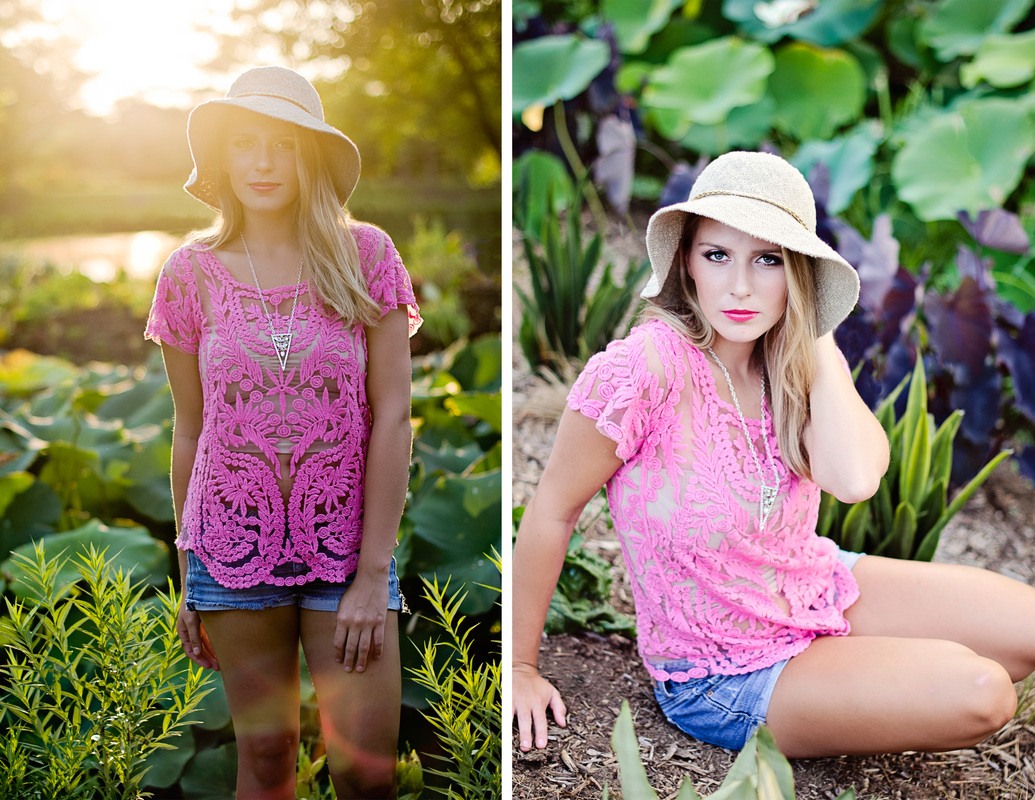
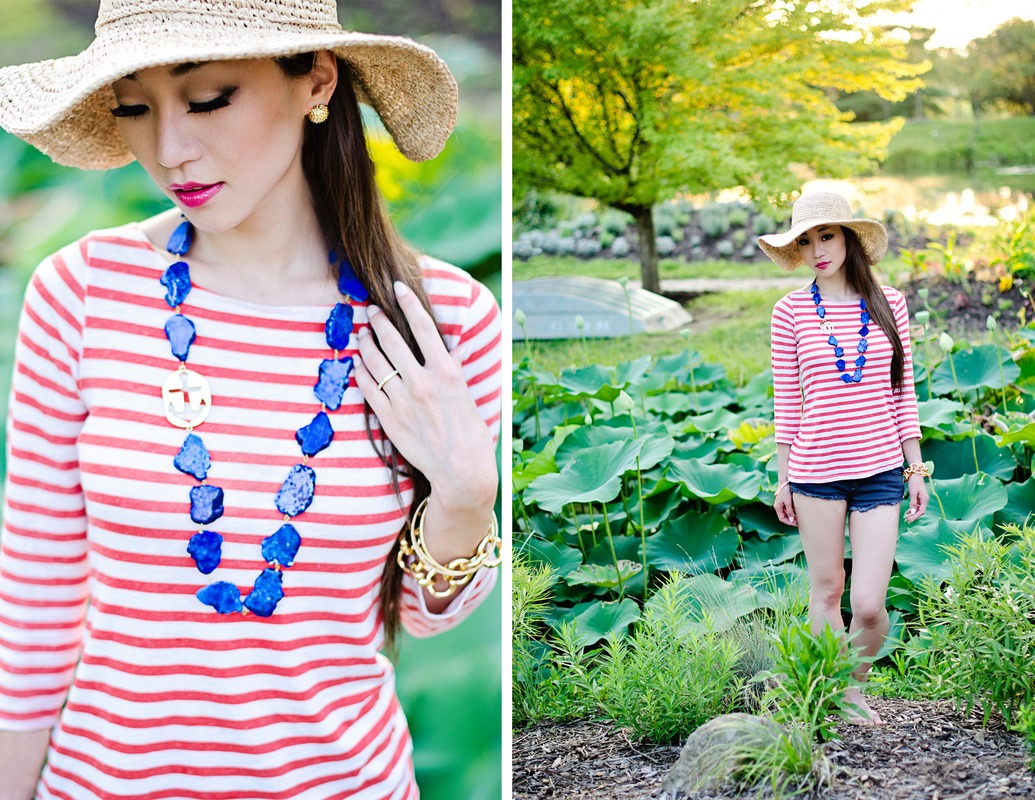
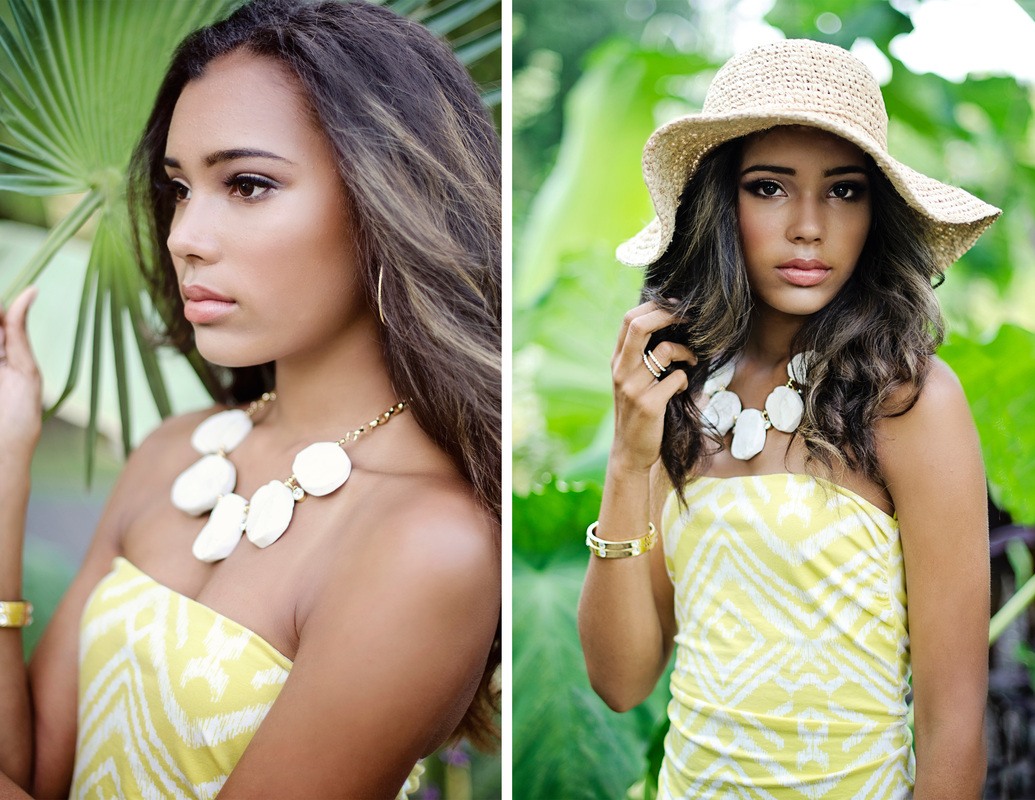

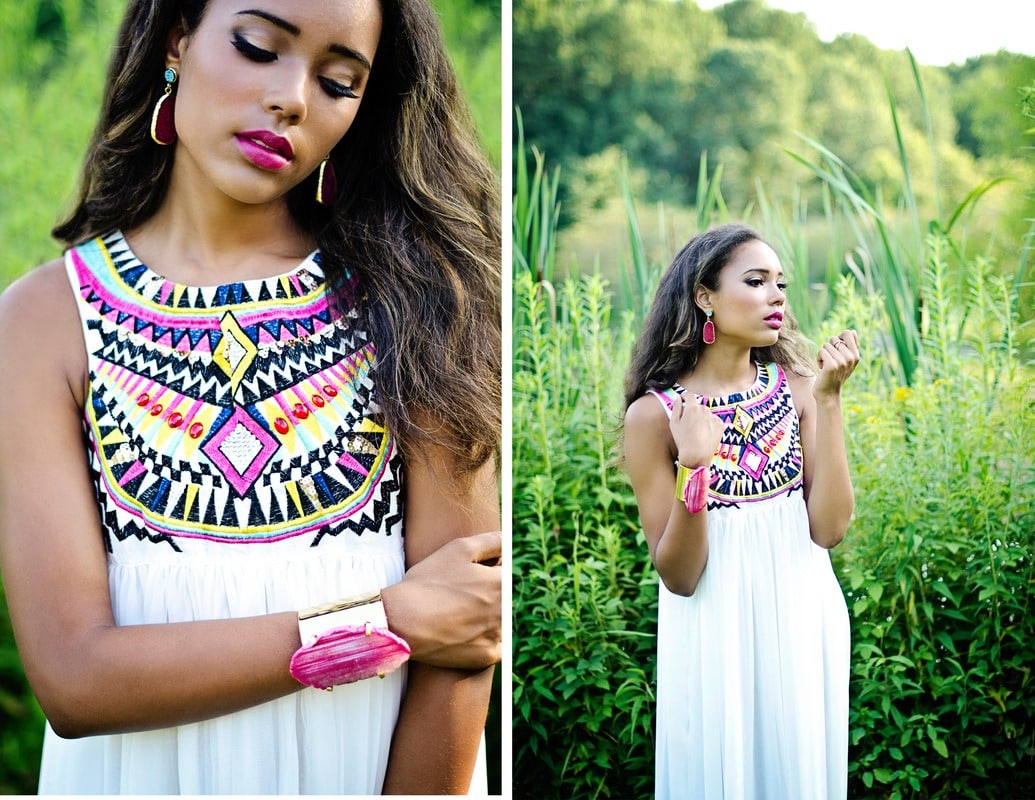
In this example, thinking about locations, securing location details and planning out wardrobes to match each botanical location led to catalog design success!
Check out the final catalog I created here that features the lifestyle photos and product photography we planned.
How to Choose Models
If you are working on a specific project, you might need models to make your concept come to life. If you’re new to working with models, you might be puzzled on how to find them. Depending on your needs, here are a few suggestions:
- If you need an experienced model, try looking at local modeling or talent agencies
- Connect with models in model and photographer meetup groups on social media
- Choose to use your friends for models! Just make sure they are made aware of the terms of the shoot. Will they be okay with their likeness being published online or in print?
- If you are doing a specific shoot like selling ballet apparel, you can go to local ballet studios and see if they could volunteer as models in exchange for free apparel etc.
When looking for models, make sure you think of your target audience and think about what they would like to see! Common enough, people want to see themselves reflected in the content they consume, so if you are a women’s apparel company think about the types of models your customers will want to see. For example, Aerie heard the voice of women in America that were tired of of “Victoria Secret Angels” and see more “realistic” beauty in women’s underwear content.


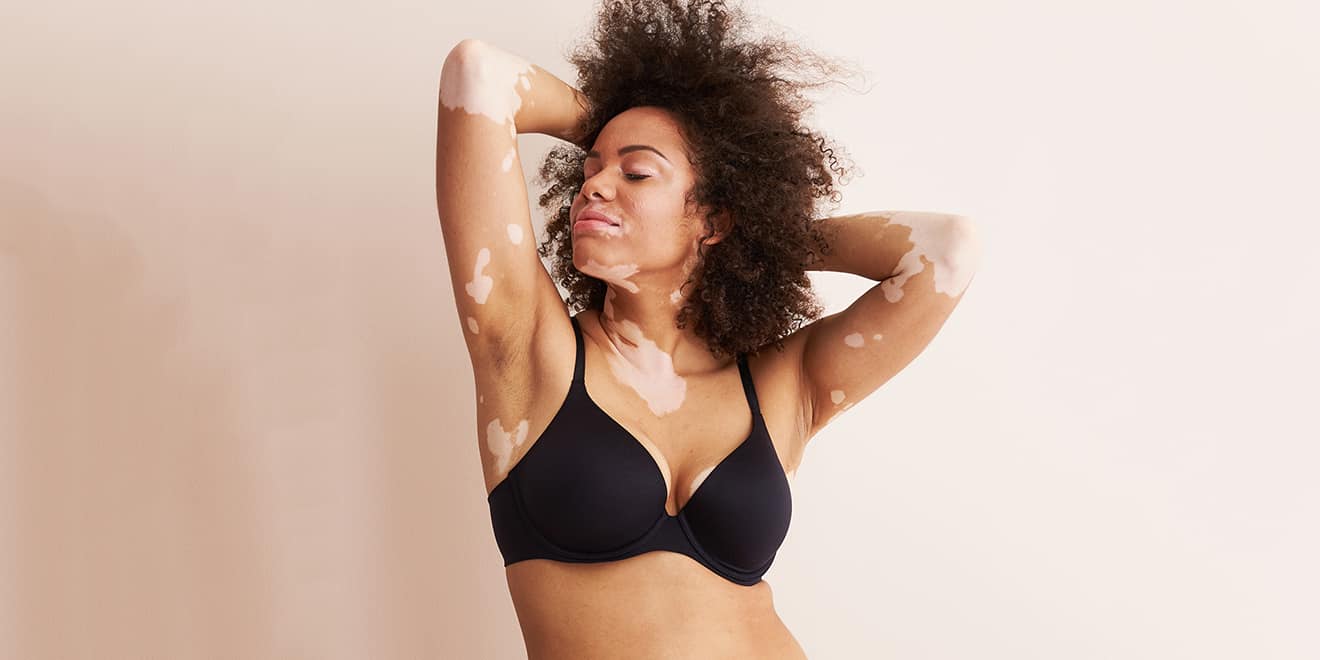
Like Aerie, you too can use market research to choose your models and ambassadors carefully and thoughtfully!
When working with models, also make sure you always get a signed model release. There are many free templates online but this allows you and protects you in using the photos the way they were intended to be used.
Consider Prop Usage
Props can be an essential to photos as they can add another element and depth to photos.
If you have things that make sense to include in your branded photoshoot, be sure to bring them! Props are meant to add to your photo, not take away from your photo, so make sure you use them sparingly and thoughtfully.
So, if you are a business consultant looking for great content photos think about things you commonly use. They could be props like:
- Laptops, notebooks, books, desk materials
- Your office space
- Photographically pretty food items (cupcakes, donuts, alcoholic drinks, etc)
- Flowers
- Mugs you love
- Jewelry and other fun accessories
- Candles
By using some of these items in your photos—especially if you are creating content around specifics—it is best to incorporate relevant props into your photoshoot! They can add some diversity, creativity and interest to your content!
BONUS TIP: Texture is Awesome For Photos! Texture brings a lot of visual interest to photos and can really help you creatively stand out amongst your competitors! Bring in textured linens, layer textured outfits, put products in textured situations that will make your audience want to touch and feel everything in your images!
Don’t be afraid to mix patterns and prints. The ability to mix patterns and prints is definitely a gift, but if you can do it well, then you can create something truly unique.
Choosing Clothing and Wardrobe
As silly and superficial as this sounds, you miss out when you do not plan wardrobes out thoughtfully!
Think about branded color palettes, matching products together for complimentary color choices and how your wardrobe will work within your location. For example, if you are planning a shoot to introduce leadership on a “ABOUT ME” page you will want to make sure your leadership’s clothing is complimentary to your brand colors and style, since your photos will be used on your website and throughout your social media accounts. If your brand is ultra high end and sophisticated, don’t wear something super casual and vice versa!
For example, Lila Rose is a Republican blogger who for many photoshoots wears conservative red, black and white outfits. She is the epitome of Washington DC female fashion in all of her photography branding. She knows how she needs to appeal to her DC political audience through not only message but visuals!
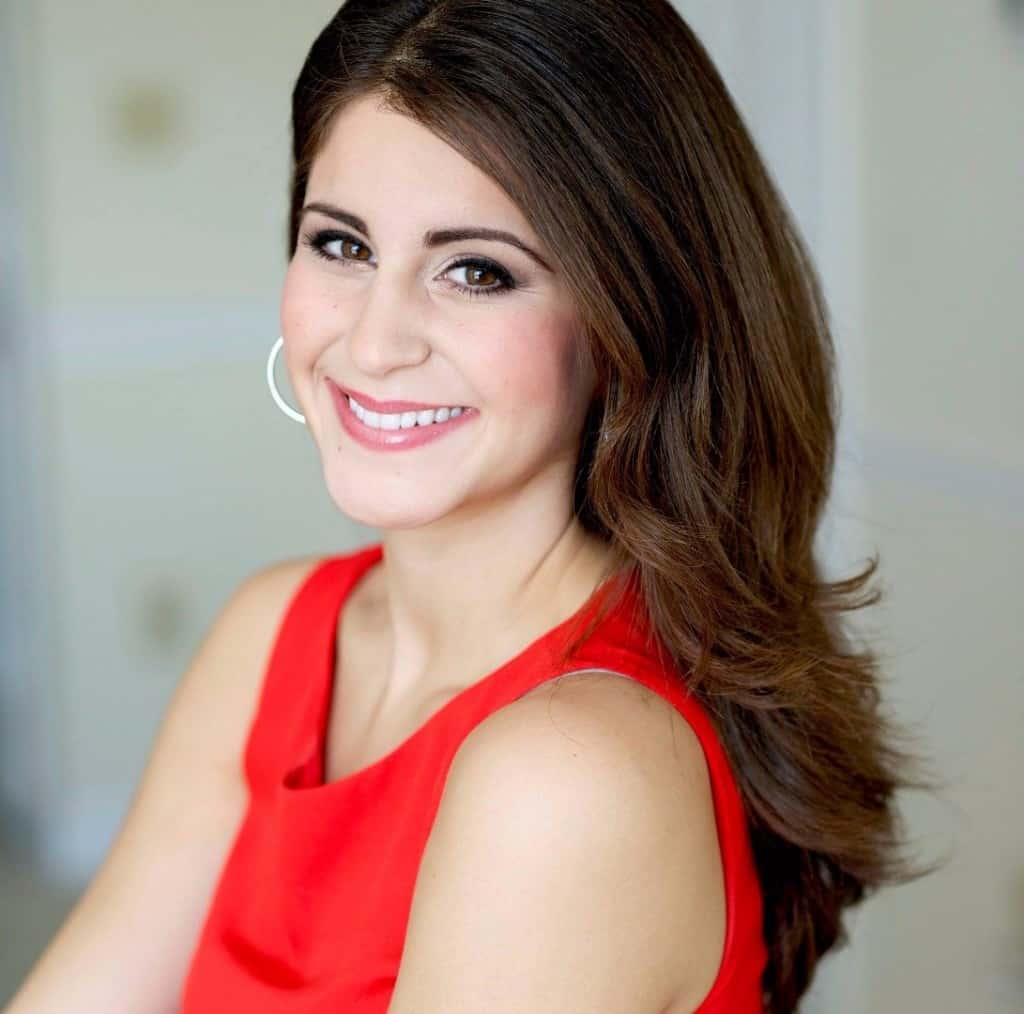
Another example to contrast that is my dear friend Annabel Wrigley of LittlePinCushionStudio. Annabel is a designer, author and owner of a modern sewing and crafting studio for children in the small town of Warrenton, Virginia.

In her photo shoots, she is commonly wearing lots of textured, playful and creative outfits that reflect her brand. She is branding herself visually to be recognized as creative, whimsical and bright.
Like these examples, you have to think about wardrobe purpose and branding. Since I have worked with many businesses on wardrobe planning I suggest a lot of wardrobe rules here in my styling guide for clients. (Typically focused on headshots and personal photography)
Ultimately, you want to dress for your brand and your audience! Ask yourself, what will the outfits project to viewers?
Have Staff on Hand or a Second Photographer
A lot of the time, you might plan so much around the actual shoot that you miss out on some low hanging content opportunities along the way!
Take advantage of other content you can create throughout your photography planning process like producing:
- “Behind-the-Scenes” looks into your shoot
- “Sneak Peeks” of products used in shoots
- Personalities of employees involved
- Interviews or reviews of models and people involved during the process
Even though they aren’t going to be “final looks” or production, people enjoy feeling like they are part of a process so seeing sneak peeks gives them a feeling of being connected with your brand.
For example, Utah Valley Bride frequently shares “behind the scene” content that helps people see how shoots are created and get’s them excited for new publications! Not only that, but it introduces potential brides to quality vendors they can contact through social media!
Take advantage of these opportunities and plan out for someone to be there to create valuable, engaging and helpful content to your viewers! (Yes, beyond the final products)
Put Together a Shot List
Since there are a lot of moving pieces to a photoshoot, it can be easy to rush through photos and forget some poses or meaningful shots you planned for, but just forgot due to the madness of the day!
To not miss out on content you need and to take some pressure off, create a shot list ahead of time.
By going into a photoshoot with specific ideas for shots you want to create, you’re able to control the outcome and ensure that you’re walking away with images you need and that each one incorporates your brand color palette, style and personality.
Try to be as specific as possible when writing down ideas for each shot, and if you have ideas for specific props styling or photo crops, include those details! To create a shot list, you can either create a written list or spreadsheet with the following information:
- Shot #
- Shot Description
- Framing
- Props/Styling
- Notes
This is your chance to get really specific with each shot and talk to your photographer about how everything all works together. Make sure you’re including a variety of shots all while allowing the photographer some creative room.
BONUS: Posing Tip
For many people, when they get in front of a camera they do not know what to do with themselves.

So, to make things easier for the photographer and models, look for poses you like online and map out how you can incorporate props and other elements you have planned using those poses. Pinterest is full of posing guides that can help you come up with visually stunning poses to use in your photography sessions!
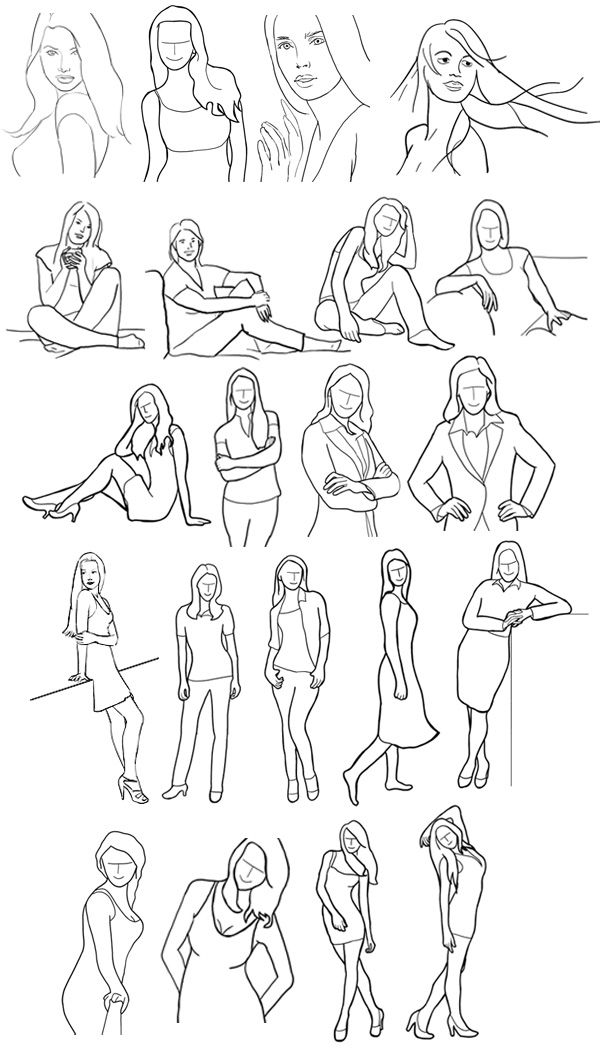
By printing off poses or including them in your shot lists, it can be really helpful in directing what you exactly want during the shoot! Some photographers have poses in mind and have done their research and others really depend upon the models to work up ideas.
Be prepared to step in and give suggestions if things seem stagnant!
Have Back Up Plans
Many styled shoots take place outdoors, so it’s wise to have a back up plan if the weather is bad.
Can you postpone if it rains? Can you go indoors somewhere? Do you have studio space available somewhere?
Always be sure to make the most out of your planned shoot because there was a lot of time, effort and individuals involved! Having a back up plan can really help everyone involved stay in the creative and happy space.
Stress hurts creativity so if you can keep everyone in a good headspace, you will produce better results having to make quick changes!
Awesome Business Brand Photos, Here We Come!
Although many people do not feel creative—especially when it comes to visual business branding—photographers and other creatives will be crucial and important relationships to build for your business growth.
Finding the right photographer is a big deal and I hope that this article helps you find someone amazing to work with. Using your good sense, branding and a few pointers from yours truly, I hope you get the photographer you want, and deserve, for your business needs!
I am an open book and if you are looking for a photographer to talk to, you can contact me any time.
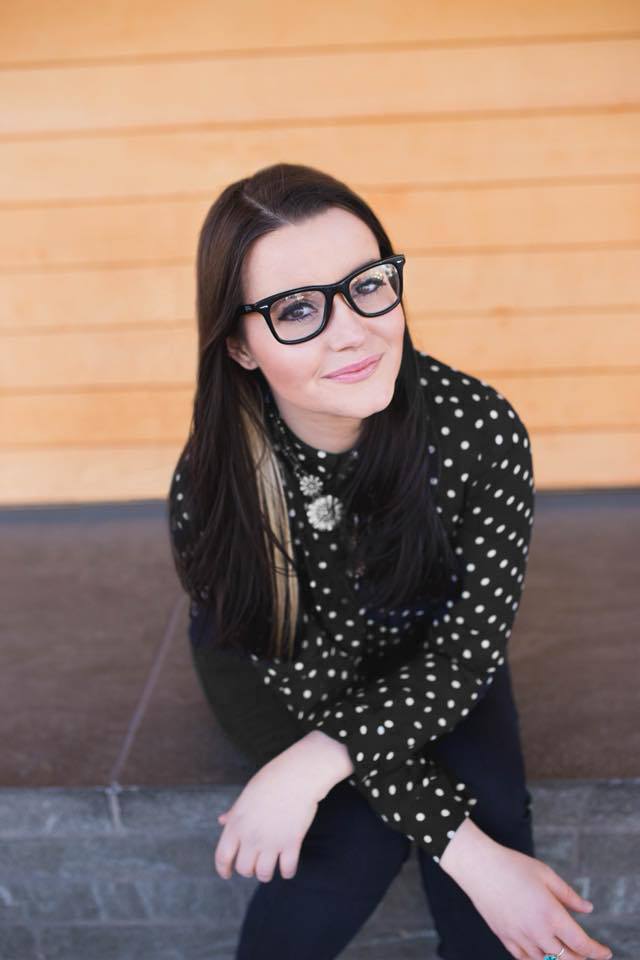
I specialize in lifestyle and business branding photography with Afton Photography (to help grow your business by sharing your personality and story with your audience). But I can also help you with many tips on personal branding, social media and visual content! Do not be shy and reach out for any questions!
What is your biggest struggle when it comes to visual branding? Does photography stress you out? Share some pain points and maybe we can start a fun chain of Q&A! Comment and share your thoughts below!


